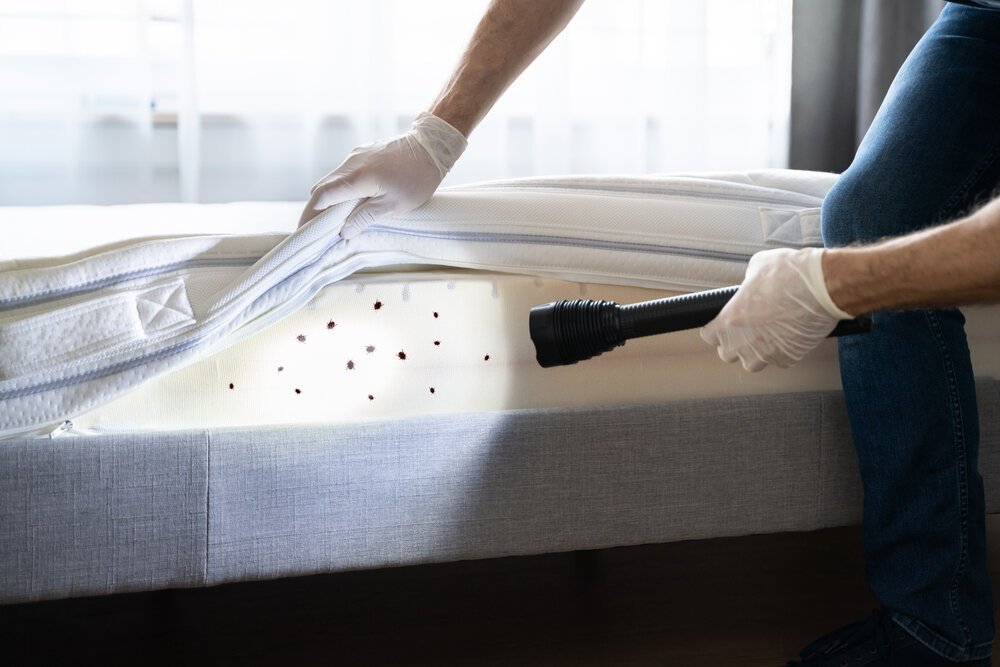Checking Out the Science Behind Bed Insect Warm Treatments as a Lasting Parasite Management Technique
In the realm of bug administration, the pursuit for lasting and efficient remedies remains a consistent pursuit. One such technique that has actually obtained traction in recent years is the usage of warmth treatments to battle bed insect infestations. By harnessing the scientific research behind thermal fatality factors for these consistent bugs, heat therapies offer a promising option to typical chemical-based techniques. The details of how warmth properly removes bed bugs and the wider ramifications for sustainable pest administration methods make this a topic worth checking out additionally.
Bed Insect Warm Therapy Refine

Thermal Fatality Factor for Bed Pests
Revealing bed bugs to raised temperature levels beyond their thermal tolerance range is important for accomplishing effective elimination in warm treatment procedures. By reaching and keeping temperatures over the thermal fatality factor for bed pests, pest monitoring specialists can ensure comprehensive removal of bed bug populaces, consisting of hard-to-reach locations where chemical therapies might be much less effective. Comprehending the thermal fatality factor for bed pests is necessary for applying successful warm treatment methods and accomplishing lasting insect management end results.
Benefits of Heat Treatments
Having established the vital thermal fatality point for bed bugs, it is crucial to now discover the substantial advantages that warm therapies offer in effectively eradicating these durable bugs. One of the key benefits is that heat can pass through deep right into splits and crevices where bed insects conceal, making certain that even the most hard-to-reach areas are warmed to deadly temperature levels.
In addition, heat therapies are ecologically friendly and safe, making them a lasting bug administration strategy. Unlike chemical pesticides, warm therapies do not leave unsafe deposits that can position threats to human wellness or the atmosphere. This aspect is particularly essential in delicate atmospheres such as health centers, schools, and residential areas where chemical usage might not be desirable.
Additionally, warmth treatments have a high success rate in eliminating bed bug infestations in a single therapy, decreasing the demand for multiple sees and reducing interruption to occupants. This effectiveness not just saves money and time but also gives comfort to those managing bed insect problems.
Effectiveness of Warmth Treatment

Warm therapies have the added benefit of eliminating bed pest eggs, which are frequently resistant to typical chemical therapies. Overall, the effectiveness of heat treatments Check This Out in removing bed insect problems makes them a reliable and sustainable insect administration method.
Sustainable Bug Administration Perks
Carrying out sustainable pest management techniques uses long-lasting benefits for both the atmosphere and public health and wellness. By utilizing approaches such as warmth treatments for pest control, we can lower the dependence on damaging chemical pesticides that can have adverse results on ecological communities and human health and wellness - DC exterminator. Sustainable parasite administration strategies aid in protecting biodiversity by targeting details bugs without harming non-target microorganisms, thus keeping a balanced ecosystem
In addition, sustainable parasite management techniques add to the total health and wellness of the public. By lessening direct exposure to harmful chemicals used in typical pest control techniques, heat treatments give a safer option for parasite administration in household, commercial, and public areas. This decrease in chemical use also assists in preventing pesticide deposits from infecting air, soil, and water, securing ecological quality.
Final Thought
In verdict, bed pest heat treatments have actually been revealed to be a reliable and sustainable bug monitoring strategy. The thermal death point for bed insects makes them prone to warmth therapies, which have numerous advantages over conventional chemical treatments. The efficiency of warm therapies in removing bed pest problems while minimizing environmental impact highlights the potential of this method as a sustainable service for insect control.
The bed insect warm treatment procedure involves raising the temperature level within plagued areas to a degree that efficiently gets rid of bed insects and their eggs. By reaching and maintaining temperatures above the thermal fatality factor for bed pests, try this site parasite monitoring specialists can make certain thorough removal of bed insect populations, including hard-to-reach areas where chemical therapies might be less efficient. One of the primary advantages is that warmth can pass through deep right into fractures and crevices where my blog bed insects hide, guaranteeing that even the most hard-to-reach locations are warmed to deadly temperatures. Unlike chemical therapies that might leave behind resistant populations, warmth treatments offer a non-toxic and eco friendly solution that can pass through deep right into furniture, wall surfaces, and various other hard-to-reach areas where bed pests hide.
The thermal death factor for bed bugs makes them at risk to warmth treatments, which have countless benefits over traditional chemical therapies.